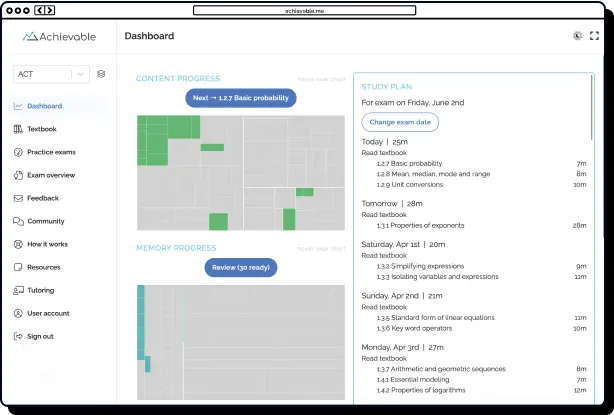
7 tips for speeding up reading comprehension on the Praxis test




Let’s be real: the Praxis test reading section isn’t exactly a light read. The Praxis Core Reading portion is packed with lengthy passages, challenging Praxis practice questions, and the constant pressure of the clock. It’s completely understandable that many Praxis exam test-takers feel overwhelmed, especially when facing complicated Praxis Reading material. You want to answer Praxis practice test questions quickly, but not so quickly that you miss key ideas. You aim for thorough comprehension, but can’t afford to get stuck rereading every paragraph. Striking the right balance for the Praxis Core can feel daunting.
Here’s the good news: you can significantly boost both your reading speed and understanding for the Praxis 5713 and similar exams. Whether you’ve just started preparing or are gearing up for test day soon, you can build real skills to help you tackle Praxis practice test passages efficiently. With a few smart strategies and consistent practice using reliable Praxis practice questions, you’ll be able to approach the Praxis Reading section with greater speed, comprehension, and confidence.

1. Know what you’re up against
Before you even open your Praxis Core prep book, it’s important to understand the types of reading you’ll encounter on the Praxis exam. The Praxis Core Reading section, also known as the Praxis 5713 test, features passages drawn from a diverse range of fiction and nonfiction sources: short stories, historical documents, social science excerpts, and scientific explanations. These passages are followed by questions that may focus on identifying main ideas, understanding vocabulary in context, analyzing the author’s tone, or evaluating logical reasoning.
Familiarizing yourself with these passage formats and question types through a Praxis practice test or sample Praxis Reading sections can help minimize surprises on test day. As you work through Praxis practice questions, you’ll start to recognize common patterns and know what to expect, which gives you a valuable edge and helps you work more efficiently when it counts.
2. Read like you mean it (a.k.a. active reading)
Reading isn’t just about moving your eyes across the page. To really get what a passage is saying, you have to stay engaged. That means asking yourself little questions as you go:
- “What’s the author trying to say here?”
- “Is this paragraph giving a reason or an example?”
- “How does this part connect to what I just read?”
This is called active reading, and it makes a big difference. Instead of zoning out halfway through a paragraph and having to go back, you stay mentally “checked in” the whole time. Bonus: It also makes answering the questions way easier, since you’ve already built a mental map of the passage.
3. Boost your vocabulary
If you constantly get tripped up by unfamiliar words, you’re not alone, and you’re not stuck that way. Reading more in your everyday life (news articles, essays, blogs, and well-written opinion pieces) can do wonders. Every time you come across a word you don’t know, pause, look it up, and try to use it later. Apps like Quizlet make it easy to build your own vocab decks on the go.
The stronger your vocabulary, the less time you’ll spend decoding words, and the more smoothly you’ll move through each passage.

4. Try “chunking” instead of word-by-word reading
One of the biggest slowdowns is reading like you’re in elementary school again (one word at a time). Instead, try chunking, which means training your eyes to take in small groups of words at once (usually 3 - 5 words). It feels weird at first, but with practice, it becomes second nature.
Think of it like switching from walking to biking: once you pick up speed, you cover more ground in less time. There are even apps (like Spreeder or AccelaReader) that can help you practice this visually, so your brain gets used to seeing and processing more at once.
5. Learn to skim without missing the good stuff
We’ve all heard the advice to “skim,” but what does that actually mean? On the Praxis, smart skimming can be a game-changer. Instead of reading every single word with equal attention, focus on the parts that matter most:
- First and last sentences of paragraphs
- Topic sentences and transitions
- Any words in bold or italics (if applicable)
This gives you a general sense of the passage’s structure and main points. Then, when you look at the questions, you’ll already have a mental roadmap, meaning you can zoom in on the right section faster.
6. Time yourself
No one loves timed practice, but it’s one of the most effective ways to improve. Start by completing reading sections untimed to build confidence and familiarity. Then, slowly introduce a timer, even if it’s just to see how long you naturally take. Over time, you’ll learn to pace yourself better and avoid getting stuck on tough questions.
Pro tip: If you’re totally stumped by a question, flag it, move on, and circle back. Wasting three minutes on one answer can cost you three other questions, and that’s a trade-off you don’t want to make.

7. Review like a detective
Don’t just take practice tests: study them. When you get a question wrong, don’t just shrug and move on. Ask yourself:
- Did I misunderstand the passage?
- Did I rush and misread the question?
- Did I fall for a trick answer?
Understanding why you made a mistake is key to not repeating it. Keep a log of your most common reading errors. You’ll start to notice patterns and can work on them directly.
Trust the process
Improving your reading skills for the Praxis test requires consistent effort, but progress is gradual and absolutely achievable, especially with dedicated practice. By implementing the strategies above, committing to regular Praxis practice tests, and actively reviewing challenging Praxis practice questions, you’ll notice real gains over time. Think of prepping for the Praxis 5713 like race training: each study session and every new reading tactic contribute to stronger performance on the actual Praxis Reading section.
Over time, you’ll not only become a faster reader, but you’ll also develop a deeper understanding needed to conquer any passage on the Praxis exam. When your Praxis test day arrives, you’ll approach it with genuine confidence. Owning your preparation with Praxis practice tests and analysis of Praxis Reading material has given you the skills to tackle whatever questions are presented.

